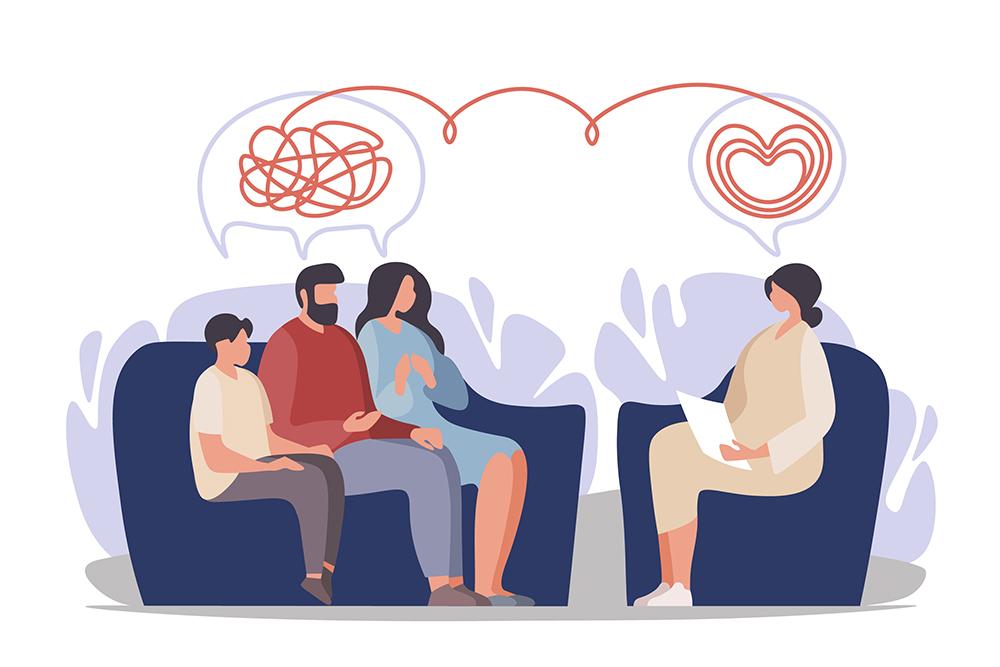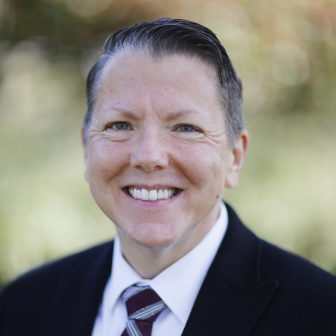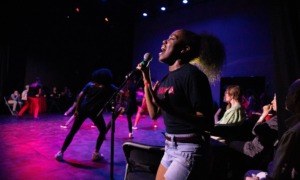
Lana Ko/Shutterstock
.
Policy regarding young people experiencing homelessness, youth involved in the juvenile legal system, young people of color and youth who are lesbian, gay, bisexual, transgender and/or queer (LGBTQ) cannot be formulated or analyzed in isolation. We know that LGBTQ youth are disproportionately likely to experience homelessness, comprising as high as 40% of the total population of youth experiencing homelessness. LGBTQ youth of color reported twice the rate of homelessness compared to white LGBTQ youth.
We know that LGBTQ youth are overrepresented in juvenile legal settings, with as many as 20% of youth in the juvenile legal system identifying as LGBTQ, and 12% as transgender or gender non-conforming. We also know that LGBTQ and gender non-conforming youth in the juvenile legal system are significantly disproportionately likely to be youth of color at 85%, and significantly disproportionately likely to be girls at 40% (compared to 13% of boys). Finally, we know that LGBTQ youth are twice as likely to have a history of running away or experiencing homelessness prior to entering the juvenile legal system, compared to non-LGBTQ youth.

Ames Simmons
Two significant factors that we must take into account when asking why this might be the case, and what policies should be enacted to respond to these data, are school pushout and family rejection. It is not a coincidence that more LGBTQ young people enter the juvenile legal system, given the disproportionately negative experiences that many LGBTQ youth have in school.
Almost one in 10 LGBTQ students reported receiving school discipline just because they identify as LGBTQ, or receiving harsher school discipline than non-LGBTQ students. There is a greater disparity for LGBTQ youth of color who attended predominantly white schools or schools with predominantly other ethnicities. LGBTQ students are also more likely to experience a lack of safety at school, with those who reported experiencing discrimination at school reporting missing school at three times higher rates than other students (42.3% vs. 13.8%).
What happens when young people miss school? They often experience school discipline or legal system involvement because of truancy laws. These interlocking factors mean that young people who have unstable housing have increased juvenile legal system involvement by way of school discipline, almost five times higher than LGBTQ students who live in their parent or guardian’s home (9.7% vs. 1.9%).
New models for family engagement
When looking behind why LGBTQ youth are so disproportionately likely to experience homelessness, it is important to move beyond simply citing family rejection as the reason. Other factors besides coming out as LGBTQ may drive homelessness among LGBTQ youth, including broader family instability issues such as poverty, violence, addiction and mental health problems. Policy and solutions must be multidisciplinary and responsive to trauma as well as systemic racism embedded in institutions designed to address youth.
There is no question that emerging solutions such as rapid rehousing for LGBTQ youth should be explored due to overwhelming success statistics, such as 85% still in stable housing one year after exiting a rapid rehousing program. Short-term host home programs also are showing promise as a practice for responding to LGBTQ youth experiencing homelessness, with programs in place in 12 cities across the United States, including a program starting up in Durham, N.C., by the LGBTQ Center of Durham.
Point Source Youth, whose mission is to “scale-up effective solutions to end th[e] crisis” of “more than 3.5 million youth in the US experienc[ing] homelessness each year,” also acknowledges that family and kinship strengthening is a key component along with rapid rehousing and host homes to respond to this housing crisis. Point Source Youth says that more than 40% of agencies responding to the LGBT Homeless Youth Provider Survey do not offer any programming that addresses family conflict. Research by Chapin Hall at the University of Chicago confirms that:
“Common notions of LGBTQ youth being evicted by families into homelessness after ‘coming out’ are overly simplistic and obscure important opportunities for family-based intervention to prevent youth homelessness.”
By not engaging in sufficient family support, we may be denying LGBTQ youth a significant source of resilience and strength. “Engaging family members in a nuanced way can strengthen the supports available to LGBTQ youth,” Chapin Hall writes. For example, extended family or non-family allies in the household may be an important part of effective intervention to prevent homelessness.
Sources of new models for family engagement to strengthen LGBTQ youth include Caitlin Ryan’s Family Acceptance Project at the University of California San Francisco. Ryan’s research “linked family responses with risk and protective factors for key concerns including sexual health, HIV infection, substance use, depression, suicide and well-being. We also assessed the availability of services for families of LGBT youth to help develop research-based resources and interventions to educate families and increase family support for their LGBT children.”
Here in North Carolina, it is imperative that our systems take a coordinated approach to responding to LGBTQ youth experiencing homelessness and the juvenile legal system. With ever more youth in school experiencing homelessness in North Carolina (approximately 4,500 in both Wake County and Mecklenburg County), and only 38% of systems metrics met, according to the State Index on Youth Homelessness from the True Colors Fund, North Carolina ranks 44th in the United States.
While North Carolina does have an Interagency Council for Coordinating Homeless Programs, and a Youth Advisory Council, which importantly includes Todd Rosendahl, Point Source Youth’s associate director for the South, it is important that the state adopt a plan to end homelessness, with specific strategies to address homelessness among LGBTQ youth. Representatives from North Carolina Healthy Schools and from the Division of Juvenile Justice should be at the table when formulating those strategies, in addition to LGBTQ youth with lived experience and organizations with LGBTQ policy expertise.
Those strategies should include promising strengths-based practices like family engagement models, rapid rehousing and short-term host home programs that respond to the intersections of racism, school pushout, juvenile legal system involvement and anti-LGBTQ discrimination.
Ames Simmons is a queer white trans man serving as Equality NC’s policy director, with work rooted in community-based efforts prioritizing anti-violence, anti-oppression and transgender justice.































